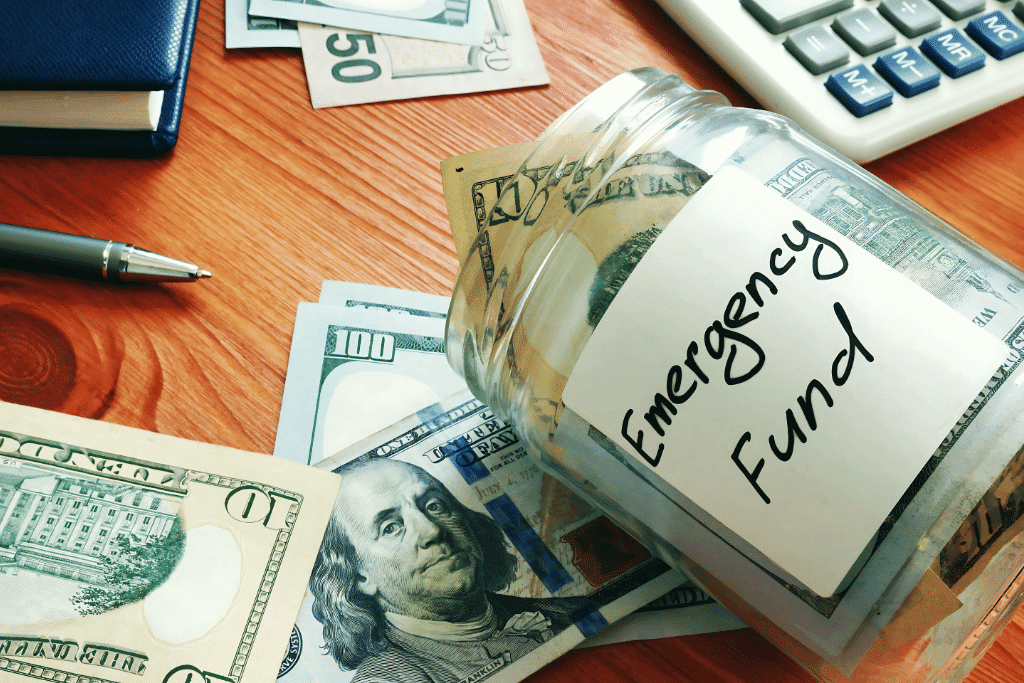Start the year strong with a plan to safeguard your financial future.
Last year, a sudden hospital bill caught me completely off guard. It was a stressful moment that reminded me why having an emergency fund is so important. Without one, even a single unexpected expense can derail months of careful financial planning. I was lucky enough to have some savings to fall back on, but the experience made me realize how critical it is to maintain and grow my emergency fund.
Now that January is here, it’s the perfect time to take stock of your finances and make a plan to protect yourself from the unexpected. Whether you’re starting from scratch or looking to rebuild, creating an emergency fund is one of the best financial decisions you can make. Let’s walk through how you can set yourself up for success and start the year on the right foot.
Why January Is the Perfect Time to Start
January represents a fresh start. It’s a time when many of us reflect on the past year and set goals for the months ahead. This sense of renewal makes it an ideal moment to prioritize financial security by starting or rebuilding an emergency fund.
There’s also a practical side to starting in January. Many people reassess their budgets after holiday spending, taking a closer look at where their money is going. By incorporating an emergency fund into your financial plans now, you can make it a central part of your budgeting process for the entire year.
Additionally, preparing for the unexpected early in the year can help you avoid the stress of scrambling to cover surprise expenses later. Whether it’s a sudden car repair, a medical bill, or a temporary loss of income, having even a modest emergency fund in place can prevent these challenges from spiraling into long-term financial strain.
January also sets the tone for the year ahead. By taking action now, you’re building positive momentum. Each small contribution to your emergency fund reinforces your commitment to financial preparedness. The habits you create in these early months can carry you through the rest of the year, ensuring you stay on track with your savings goals.
What Is an Emergency Fund, and Why Do You Need One?
An emergency fund is a dedicated pool of savings set aside for life’s unexpected moments. Whether it’s a medical bill, a major car repair, or a sudden job loss, these funds are there to help you weather financial storms without resorting to high-interest credit cards or loans.
Think of an emergency fund as your financial safety net. It’s not just about covering surprise expenses; it’s about reducing stress and giving yourself the peace of mind that you’re prepared for whatever life throws your way. Without an emergency fund, even a small setback can lead to financial strain, forcing you to juggle bills or fall deeper into debt.
The key to an effective emergency fund is accessibility. It should be separate from your other accounts but easy enough to access in a true emergency. This separation prevents you from dipping into the fund for non-essentials while ensuring it’s available when you need it most.
Building an emergency fund might seem daunting, but it doesn’t have to happen all at once. Start small. Even $500 can make a significant difference in handling unexpected expenses. Over time, aim to save three to six months’ worth of living expenses. This goal provides a solid cushion for larger emergencies, like a job loss or extended medical leave.
For a deeper dive into building and protecting an emergency fund, check out our guide on Emergency Savings. It covers the basics and more advanced strategies to help you get started.
Steps to Set Up Your Emergency Fund This Month
Starting an emergency fund can feel overwhelming, but breaking it down into manageable steps makes it achievable. Here’s how to set up your fund and start building financial security this January:
1. Determine Your Target Amount
Begin by setting a realistic initial goal. For many, $500 to $1,000 is a good starting point. This amount can cover smaller emergencies, like car repairs or unexpected medical co-pays. Over time, aim for a larger goal of three to six months’ worth of living expenses to provide a solid safety net. If you’re unsure where to start, calculate your average monthly expenses and multiply by three.
For more advice on saving beyond emergencies, check out Saving Goals After Saving for Emergencies.
2. Open a Dedicated Savings Account
Your emergency fund should be separate from your everyday checking account to avoid accidental spending. Look for a savings account with no fees, easy access, and a competitive interest rate. A high-yield savings account is an excellent option for growing your fund while keeping it safe.
3. Set Up Automatic Transfers
Automating your savings is one of the easiest ways to stay consistent. Schedule regular transfers from your checking account to your emergency fund. Even small amounts, like $10 or $50 per paycheck, add up over time. Automating this process ensures you’re prioritizing your savings without having to think about it.
4. Reduce Spending Temporarily
Consider trimming non-essential expenses this month to jump-start your fund. For example:
- Cut back on dining out or takeout meals.
- Pause subscriptions or memberships you’re not actively using.
- Opt for a no-spend weekend to save on discretionary purchases. Redirecting these savings toward your emergency fund can make a big difference quickly.
5. Celebrate Small Wins
Each step forward is progress, no matter how small. Celebrate milestones, like reaching your first $100 or $500. These wins not only boost your confidence but also help reinforce the habit of saving.
By following these steps, you’ll be well on your way to building a financial buffer that protects you from life’s unexpected expenses.
When to Use—and NOT Use—Your Emergency Fund
An emergency fund is meant to be your safety net, but knowing when to use it—and when not to—is just as important as building it. True emergencies are situations where an unexpected cost could destabilize your financial wellbeing. Medical bills, car repairs, or covering basic living expenses during a job loss are examples of when tapping into your emergency fund is appropriate.
However, not all expenses qualify as emergencies. It’s tempting to dip into your savings for a vacation deal or a new gadget, but doing so defeats the purpose of the fund. These types of purchases can often be planned and budgeted for over time, keeping your emergency savings intact for when you truly need it.
It’s also worth considering alternatives before using your emergency fund. For example, if a car repair expense can be managed with a portion of your monthly budget or through a small, temporary adjustment to spending, avoid withdrawing from the fund. The goal is to preserve it for situations where no other options are feasible.
The hospital bill I mentioned earlier was a stark reminder for me. Without the funds set aside specifically for emergencies, I would have had to rely on high-interest credit cards, creating unnecessary financial stress. That experience taught me that protecting your emergency fund for true crises is crucial for long-term stability.
For more on how to prioritize and balance between saving and other financial obligations, you can explore our guide on Debt Repayment vs. Emergency Fund. The decisions you make about when and how to use your savings can have a lasting impact on your financial security.
Maintaining and Growing Your Emergency Fund
Building an emergency fund is just the first step. To truly benefit from it, you need to make maintaining and growing your savings an ongoing habit. Life rarely goes according to plan, so it’s important to ensure your fund is always ready to handle the unexpected.
If you use your emergency fund, commit to replenishing it as soon as possible. Even small, consistent contributions can restore your savings over time. Treat it as a top priority in your budget until you’re back to your target amount. The quicker you rebuild, the more protected you’ll be when the next emergency arises.
As your life and expenses change, your emergency fund should evolve too. Reassess your savings goal at least once a year. Factors like inflation, a new job, or an increase in monthly expenses may require adjusting your target amount. For instance, if your cost of living has risen, aim to increase your fund accordingly to maintain the same level of security.
Growing your emergency fund doesn’t have to mean cutting corners on everything else. Automating a portion of your income into your savings account ensures steady progress without requiring constant effort. And if you come into extra money—like a tax refund, bonus, or unexpected windfall—consider putting a portion toward your emergency fund to boost it faster.
The peace of mind that comes from knowing your emergency fund is intact and growing can’t be overstated. By maintaining this habit, you’re not just preparing for unexpected expenses—you’re building a foundation for long-term financial stability.
A Safety Net You’ll Thank Yourself For
An emergency fund is like having a friend who always has your back—except this friend doesn’t ask for anything in return. By starting (or rebuilding) yours this January, you’re giving yourself the gift of peace of mind and financial stability. Trust me, your future self will thank you when life throws its inevitable curveballs.
The beauty of an emergency fund isn’t just in what it can cover, but in what it protects: your plans, your goals, and your sanity. It’s a quiet hero in your financial journey, stepping in when things go sideways so you can stay upright.
Remember, this isn’t about perfection. If you can only save a little right now, that’s okay. Small steps taken consistently lead to big wins. Just don’t wait—there’s no better time to start than today.
So, let’s make 2025 the year we prepare for the unpredictable. With every dollar you save, you’re building a stronger, more resilient version of yourself. And if a hospital bill—or a surprise flat tire—comes your way, you’ll be ready. That’s the kind of peace no price tag can match.








